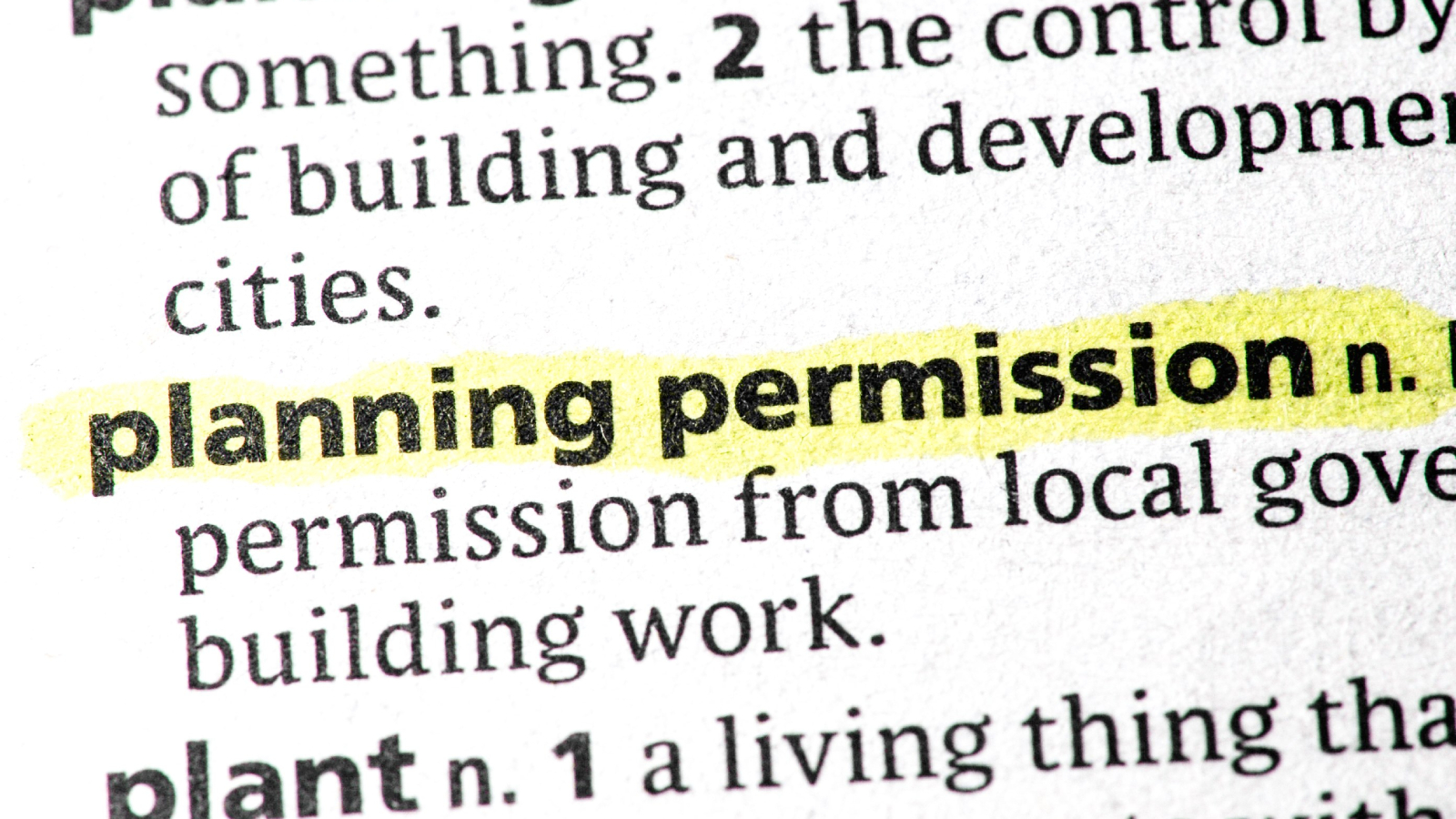We asked two planning experts which mistakes to avoid when applying for planning permission
We asked a town planner and planning consultant the key things you shouldn't do when applying for planning permission. Here's what they said

If you're set to start investigating planning permission, you'll likely have had plenty of suggestions on the right things to do when making your application. But, knowing what not to do, is just as important.
We asked Glen Baker-Adams, a town planner, planning consultant for HiiGuru and founder of Grounded Planning and Kathryn Williams, managing director of Kew Planning to share some of the key mistakes homeowners make when applying for planning permission.
From not making assumptions to misunderstanding planning terminology, here's what they had to say.

Glen is a Development Management Team Leader in town planning, runs his own planning consultancy and also provides his services via the HiiGuru online platform. Facilitating effective town and country planning is his purpose and he has experience in all manner of planning applications.

Kathryn has over 17 years’ experience working on both private and public sector projects. As well as overseeing work at Kew Planning, she acts as the planning officer on three strategic allocated housing sites for Brentwood Council.
Planning permission mistakes
1. Don't assume your opinion is fact
Knowledge is power and planning is no exception to this rule. According to Glen Baker-Adams, one of the most common mistakes homeowners make is to rely on unfounded assumptions.
"People so often assume that the changes they want to make, or the ideas they have are acceptable - simply because they think they are, or they have seen a similar project in a different area," says Glen. "A lot of the inquiries I receive are from people who have land and think they can do whatever they want with it.
"The truth is that a lot of the time you can’t, and that's why I think that research and early engagement with your council is important," says Glen, "because you can find out what is acceptable and remove the guesswork from the application."
That's not to say you can't apply your powers of assumption to more obvious matters, as if you read the signs correctly, this can certainly help.
Bring your dream home to life with expert advice, how to guides and design inspiration. Sign up for our newsletter and get two free tickets to a Homebuilding & Renovating Show near you.
"If you looked at a street, for example," says Glen, "and you noticed that all the houses had a certain extension, you’d be fairly safe to assume this would get passed.
"But that doesn’t mean you can’t consider other options and you don't have choices. Just don’t go too far in the process," says Glen, "and make sure you ask the right questions before you proceed with your plans."

2. Don't rush your application or responses
"Rushing to submit an application that does not address all considerations should be avoided," says Kathryn Williams. "This is likely to lead to multiple rounds of consultation or require additional information, which causes a lot of delays.
"Re-consultation, if formal, can take up to 21 days for responses," warns Kathryn, "so make sure that all the information submitted is correct and consistent across all the documents. All technical information should be within the application, and I would also recommend detailed explanations of the design rationale and how the proposal addresses the following issues: constraints of the site, the building’s quality in terms of aesthetics, usability for end users, the merit of placemaking, and logistic and construction considerations."
"It is always preferable to demonstrate that the team has considered these factors proactively," says Kathryn, "rather than waiting for the planning officer to raise questions about them."
And, if additional information is requested, don't rush the process, but do be prepared to provide an indication of the timescale that it will take to source the information and agree it with the planning officer.
"If you take a long time to submit additional information, or you haven't provided the right information it inevitably creates a delay in being able to determine the application," says Kathryn.
"Also, do not submit information that does not address the officers comments, without providing an explanation," she adds. "Doing so is likely to make the planning officer feel their time has been wasted and could reduce their willingness to collaborate positively."
3. Don't forget both meanings of the word sustainability
In planning, the word sustainability has two meanings and you shouldn't underestimate the impact they can have on whether your plans are refused.
"By sustainability, we aren’t just referring to low-carbon or sustainable heating," explains Glen Baker-Adams, "it’s also how sustainable a location is. So, if your plot or land is in a city, town or even village where there’s shops, amenities, schools and infrastructure it’s considered a sustainable location.
"On the other hand, if you are building rurally where there is nothing around, the chances are there will be a more difficult planning process ahead," says Glen. "The location will be considered non-sustainable. For example, people living there will have to drive cars which means it won't just be about the increased carbon emissions , it will also mean highways have to consider access and safety issues.
It's not to say it won't get passed, but you will certainly need to ensure you bear it in mind. If you are looking at a rural location, Glen says it can be worth considering a conversion rather than building from scratch.
"In recent years, in order to try and deal with the lack of housing, the government has introduced things like agricultural conversions," he explains, "whereby you can change a building such as an agricultural shed into a house or multiple houses.
"It doesn’t apply to all buildings such as those in a conservation area or listed buildings," says Glen, "but if you are considering a rural development, generally speaking, agricultural buildings can be turned into accommodation more easily than building on a remote plot of land."

4. Don't delay the paperwork if Section 106 is required
"Some applications may require a legal agreement (Section 106) to ensure that any costs needed to make the development acceptable can be secured," explains Kathryn Williams.
The requirement for a section 106 will be dependent on the local planning authority and the planning policies," says Kathryn, citing how some areas may look to include an element of contribution towards affordable housing, depending on the size of your build.
"However, if you're not clear if the requirement will apply, I would always suggest you find out from the planning officer at an early stage if this will be needed. I would then recommend requesting the draft heads of terms and start the process as soon as possible.
"This element can be a very time consuming," says Kathryn. "and the final decision notice cannot be issued until the legal agreement is signed by all land owners, as well as those with an interest in the land subject to the planning application."
5. Don't be afraid to withdraw your plans to accommodate changes
Although it's not new news, changing things in your planning application will undoubtedly have an impact on the speed at which your plans are passed. While small changes may not hinder the process too much, big ones will. But could you be dealing with it differently?
"The big changes are where the delay happens," confirms Glen Baker-Adams, "because they might mean planning consultants or officers are basically looking at a whole new scheme. Small changes are fine, you can get usually get away with these without too much impact, but if you're making big changes during the application process, that can irritate and cause concern," he says, noting how some councils will now even charge if you make a big change to try in order to try and discourage it.
In terms of how you deal with the request for changes, Glen offers the following advice.
"If you feel early on that your application is probably going nowhere, but you want to see it through and not make any changes, you’re probably best letting it be rejected and find out how to appeal a planning decision - as long as you accept this will include delays and extra costs.
"But, if you realise there are changes that could make it better," says Glen, "then definitely the best approach would be to withdraw and resubmit the application so that you aren't issued with a full rejection.
"Personally," he says, "I definitely advocate the withdraw and go again approach once you’ve made the changes. If it does get refused the second time around, at least you've also shown that you have had that dialogue and tried to make it right."

6. Don't forget you are only a temporary custodian of your home
One thought that struck me when renovating a period property, was that even though at that moment it time it was my home, the reality is homeowners are only temporary custodians of their homes. Properties have new owners throughout their lifetime and this can impact planning decisions.
I asked Glen Baker-Adams if people forget this when applying for planning permission.
"Absolutely," says Glen. "They look at it through their view point, but forget that we have to think ahead. We can't think of just them. Future generation considerations are an integral part of the planning process," he says.
"With Labour’s plans to build 600,000 houses, we have to build for the future," explains Glen, "not just for the present time, and this is how planning applications have, and always will be assessed."
7. Don't try and influence the decision
While Kathryn Williams and Glen Baker-Adams agree that early consultation is key, with Kathryn saying: "I would look to obtain advice from the planning authority via pre-application services, which will mean you engage with the planners before submitting an application. This really helps for several reasons, but primarily it allows for any contentious matters to be addressed before submitting an application and also for clarity on interpreting planning policy," they are also keen to point out that there isn't one individual person responsible for the final decision whom you can influence.
So, when I ask Glen Baker-Adams if getting your local councillor on board is a good idea, he shares a word of caution.
"I think, unfortunately, from my experience it can muddy the waters, more than make it helpful," says Glen. "Unfortunately, unless they are in charge of the various different areas involved in approving or refusing an application, it can be quite difficult for them to understand the full picture.
"You may for example have a local councillor who has an interest in highways and they therefore think they can control what's happening," says Glen. "The highways department, unfortunately, don't agree and it can then become quite disconnected."
So while it's beneficial to research local councillors and understand their viewpoints on planning, be prepared that they may not always be influential, or indeed even be in support of what you are trying to do.
"Finally, and not lastly," adds Kathryn, if things don't seem to be going in the direction you hope for, "do not apply unnecessary pressure to the planning officer and be derogative, verbally aggressive and intimidating. This unfortunately, happens too frequently, and is very stressful and upsetting for that person."
Keen to make sure you get your application right? Follow Glen's first hand advice in I'm a town planner - here's 5 planning tips, and check out the risks of buying land without planning consent.

Sarah is Homebuilding & Renovating’s Assistant Editor and joined the team in 2024. An established homes and interiors writer, Sarah has renovated and extended a number of properties, including a listing building and renovation project that featured on Grand Designs. Although she said she would never buy a listed property again, she has recently purchased a Grade II listed apartment. As it had already been professionally renovated, she has instead set her sights on tackling some changes to improve the building’s energy efficiency, as well as adding some personal touches to the interior.
